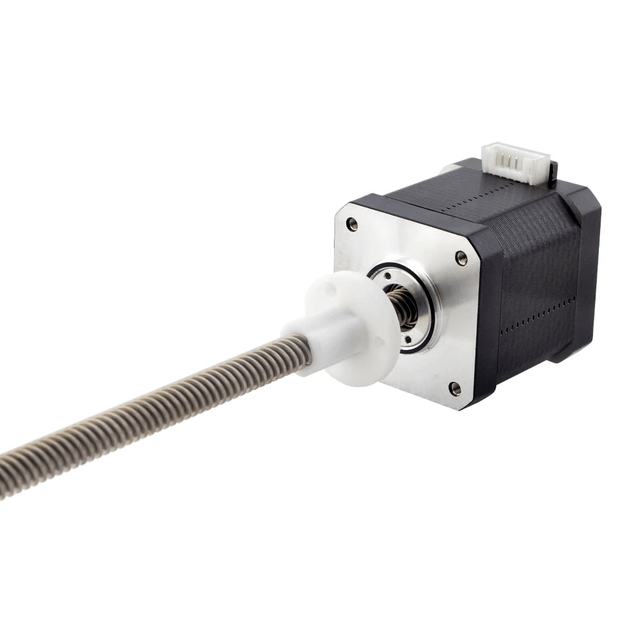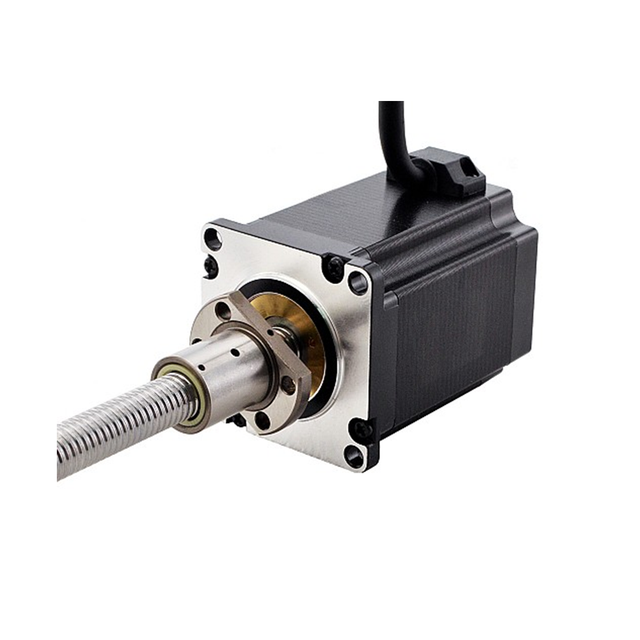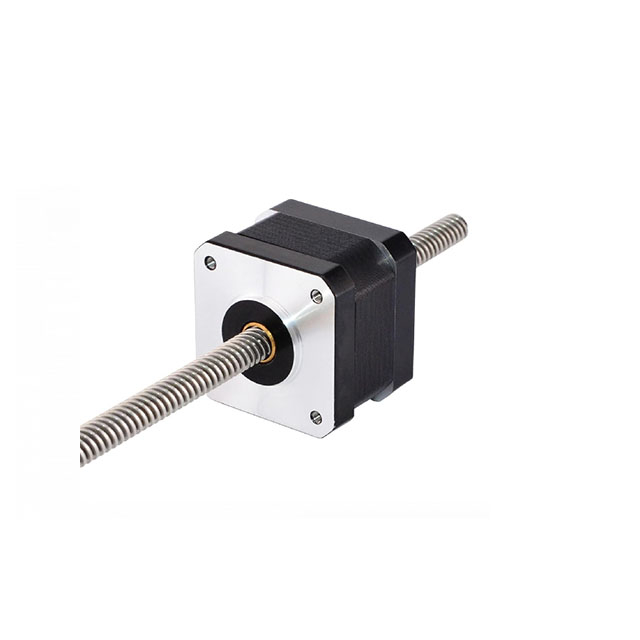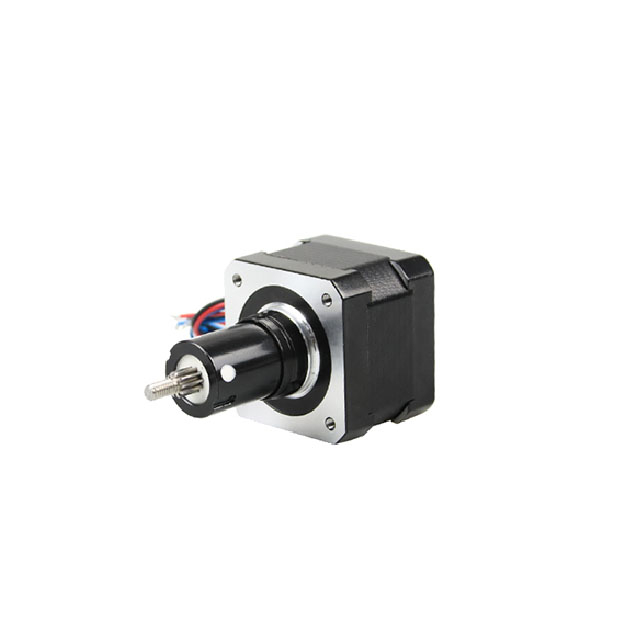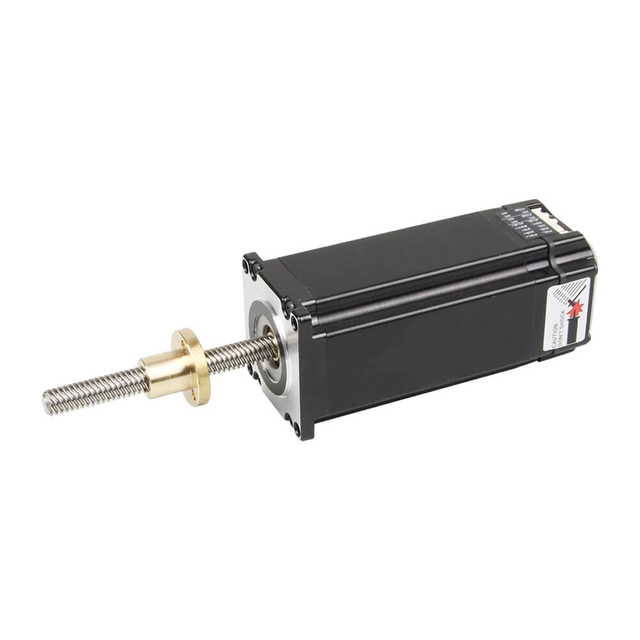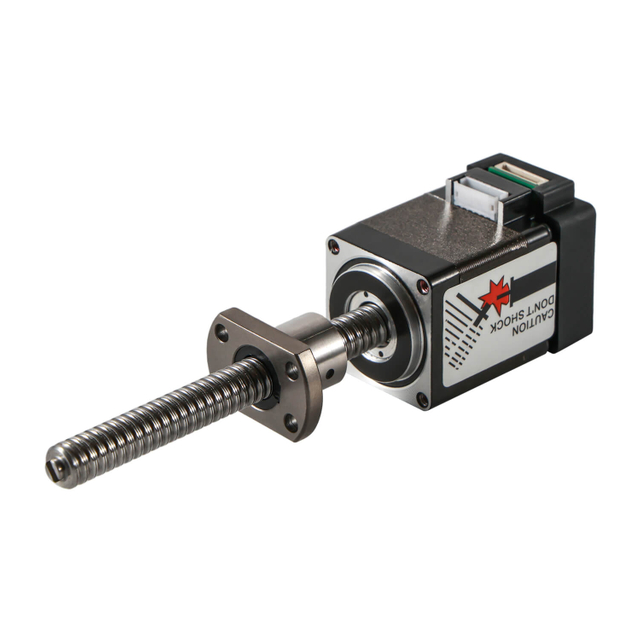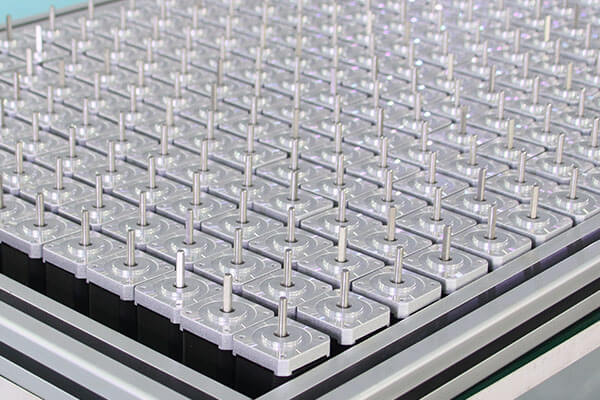
Linear motors have become a defining technology in modern automation, precision engineering, medical equipment, semiconductor fabrication, and high-speed manufacturing. Yet one question continues to surface across industries: Why are Linear motors so expensive?
The answer lies in the combination of advanced engineering, premium materials, stringent manufacturing requirements, and the superior performance advantages they deliver. Below, we break down each cost-driving factor with depth, clarity, and industry expertise to provide a complete, authoritative explanation.
High-Precision Engineering and Design Requirements
Linear motors eliminate mechanical transmission components—such as screws, gears, or belts—to deliver direct linear motion, which demands extreme engineering precision. Each component must be crafted with exacting tolerances to ensure smooth, frictionless movement.
1. Complex Magnetic Circuit Design
Linear motors rely on highly efficient magnetic circuits. Achieving uniform thrust, minimal cogging, and high acceleration requires:
This level of engineering work significantly increases development and production costs compared to conventional electromechanical drives.
2. High-Tolerance Manufacturing
To maintain micron-level repeatability, Linear motors incorporate components manufactured to ultra-tight tolerances. This often requires:
High-precision CNC machining
Laser cutting
Automated coil winding with minimal deviations
Stringent multi-stage quality inspections
These processes are far more expensive than the manufacturing of typical rotary motors or mechanical actuators.
Use of Premium Raw Materials
At the core of every linear motor lies a set of materials that directly impact the system’s efficiency, thermal performance, and lifetime.
1. Rare-Earth Permanent Magnets
Modern linear motors use Neodymium-Iron-Boron (NdFeB) magnets, often in high-grade compositions such as N48, N52, or even high-temperature variants. These magnets are among the most expensive materials used in electric motion systems.
Cost drivers include:
Price fluctuations in rare-earth elements
High magnetic strength requirements
Precision magnetization
Specialty coatings (nickel, epoxy, Parylene) for corrosion protection
Linear motors may contain several meters of magnetic rail, making magnets one of the largest contributors to overall cost.
2. High-Conductivity Copper Windings
To achieve high force output and rapid acceleration, coils are wound using oxygen-free high-conductivity (OFHC) copper. This premium grade increases cost but ensures:
3. Advanced Composite and Thermal Materials
Linear motors often integrate:
High-density laminated steel cores
Low-loss magnetic composites
High-temperature insulation materials
Specialized heat spreaders or liquid cooling jackets
These materials contribute to higher thermal stability and sustained peak performance, but they are not inexpensive to source or manufacture.
Precision Motion Control Electronics
Linear motors deliver exceptional performance only when paired with advanced motion control electronics engineered to manage high-speed operation, micron-level precision, and dynamic responsiveness. Unlike simple motors that can run on basic controllers, linear motors require a sophisticated ecosystem of drives, feedback systems, sensors, and real-time computing hardware. These electronic components significantly influence the overall cost and performance of a linear motor system.
Advanced Servo Drives Designed for High-Speed Operation
A linear motor’s power and precision come from its servo drive—the electronic unit responsible for converting incoming electrical energy into controlled, high-performance motion. These drives are far more complex than standard motor drivers and incorporate:
High-bandwidth current loops for rapid response
Fast sampling rates, often in the tens or hundreds of kilohertz
High-power transistors such as IGBTs or MOSFETs for efficient switching
Real-time trajectory calculation to synchronize motion with external systems
Adaptive control algorithms that compensate for disturbances and load changes
Because linear motors produce high acceleration and require smooth, ripple-free thrust, their servo drives must perform complex calculations with minimal latency. This demands premium electronic components, advanced firmware, and internal processing power far beyond typical motor controllers.
High-Resolution Feedback and Position Sensing
To achieve the ultra-precise movement that linear motors are known for, they rely on high-resolution feedback devices that track position, speed, and phase with extreme accuracy. These devices include:
Optical linear encoders capable of sub-micron or nanometer resolution
Magnetic encoders for rugged industrial environments
Laser interferometers for the highest precision applications
Sinusoidal feedback systems for smooth commutation
These sensors not only measure the motor’s position but also provide continuous feedback to the controller, enabling real-time correction and stabilization.
Their high precision, specialized materials, and delicate manufacturing add significant cost, especially in applications requiring:
Complex Commutation and Control Algorithms
Unlike rotary motors, which use predictable circular motion, linear motors require more complex commutation strategies to maintain consistent force and smooth movement across long travel distances.
Modern servo controllers employ algorithms such as:
These algorithms optimize:
Thrust force linearity
Position accuracy
Vibration suppression
Heat reduction
System responsiveness
Developing and implementing these control techniques requires extensive engineering effort, advanced software development, and continuous refinement.
High-Speed Data Processing and Communication
To maintain micron-level precision at high speeds, linear motor systems depend on controllers capable of processing enormous volumes of data in real time. They integrate high-speed communication protocols such as:
EtherCAT
CANopen
Profinet
SERCOS III
These networks support:
Real-time synchronization of multi-axis systems
Deterministic communication
High data throughput for encoder signals and diagnostic data
The electronics must also support:
Built-in diagnostics
Predictive maintenance features
Safety functions such as Safe Torque Off (STO)
Integration with PLCs and automation networks
This level of connectivity and intelligence increases system cost but is essential for industrial automation.
Thermal, Electrical, and Noise Management
Linear motors operate with high current densities and require electronics that can endure and manage:
High thermal loads
Electromagnetic interference (EMI)
High voltage and current fluctuation
Noise-sensitive precision applicationsServo drives must include:
Oversized heat sinks
Active cooling options
Shielding and grounding circuits
Isolated power electronics
These improvements ensure stable operation in industrial environments but increase component and manufacturing cost.
Integration With Safety and Redundancy Systems
In many industries—such as robotics, semiconductor handling, and medical devices—Linear motors must incorporate safety features that comply with strict regulations, including:
Redundant feedback channels
Safe motion monitoring
Overcurrent, overvoltage, and thermal protection
Fail-safe shutdown mechanisms
These requirements demand additional sensors, advanced firmware, and specialized circuitry, contributing further to the overall cost.
Specialized Manufacturing and Assembly Processes
Linear motors are not mass-produced in the same quantities as rotary motors. This means fewer economies of scale.
1. Low-Volume, High-Complexity Production
Applications requiring linear motors—such as lithography machines, robotics, or automated inspection systems—often have specialized needs. Manufacturers must:
Custom-engineer magnetic arrays
Customize motor lengths, coil designs, and mounting surfaces
Optimize thermal solutions for each installation environment
This customization requires engineering hours and proprietary processes, adding to the cost.
2. Precision Alignment During Assembly
Assembly requires:
These factors directly impact production labor costs.
Stringent Quality and Performance Testing
Linear motors must pass rigorous performance, safety, and reliability tests before shipment. Testing can include:
Thermal cycling
Long-duration dynamic load testing
Thrust-force measurements
Vibration and resonance analysis
Electrical safety certification
Each stage requires advanced equipment and expert oversight, adding time and expense to the production process.
Superior Performance Justifies the Investment
Although Linear motors carry a high upfront cost, they deliver unmatched performance benefits that often reduce long-term operational expenses.
1. Zero Mechanical Contact
With no gears, belts, or screws:
There is no mechanical wear
Maintenance is dramatically reduced
Long-term reliability is significantly improved
This alone lowers lifecycle cost, especially in high-duty environments.
2. Exceptional Accuracy and Repeatability
Linear motors consistently achieve:
Micron or sub-micron positioning
Smooth, vibration-free motion
Extremely stable velocity control
This makes them indispensable in:
Precision manufacturing
High-speed pick-and-place
Semiconductor and electronics assembly
Microscopy and medical imaging
3. High Speed and Acceleration
Direct-drive technology enables:
These performance traits are impossible to match with mechanical transmission systems.
Environmental and Durability Requirements
Linear motors are deployed in environments that demand exceptional robustness, stability, and long-term reliability—far beyond what conventional mechanical actuators typically encounter. Because they serve in high-performance, mission-critical applications, their design must accommodate strict environmental and durability requirements, each of which contributes to their elevated cost.
Engineered for Harsh Industrial Conditions
Many Linear motors operate in environments exposed to dust, humidity, vibration, chemicals, or high temperatures. To ensure uninterrupted performance, manufacturers incorporate specialized materials, coatings, and structural protections that maintain efficiency and precision under stress.
Typical protective measures include:
Corrosion-resistant housings made of stainless steel or anodized aluminum
Sealings and gaskets that block dust, moisture, or oil penetration
Protective magnet coatings such as nickel, epoxy, or Parylene for long-term stability
Specialized insulation materials for coils subject to elevated temperatures
These materials and processes significantly increase production costs but are essential to prevent degradation in demanding industrial settings.
Cleanroom and Vacuum Compatibility
In semiconductor manufacturing, biotechnology, and precision metrology, equipment must operate in controlled environments where even microscopic contaminants can damage products or compromise measurements. Linear motors used in these settings must be engineered to:
Generate minimal particulates
Operate without lubricants that may outgas
Withstand ultra-low pressures in vacuum chambers
Maintain precision despite thermal fluctuations
Manufacturing motors that meet ISO cleanroom or vacuum compatibility standards requires custom materials, low-outgassing coatings, and rigorous testing—each adding to cost and complexity.
High Load and Continuous Duty Endurance
Linear motors often run at high speeds, with rapid acceleration and sustained loads. This continuous dynamic stress demands exceptional durability.
Key requirements include:
High-strength structural frames to resist deformation
Advanced thermal management systems, from heat spreaders to liquid cooling
Coils designed for high current density without overheating
Fatigue-resistant magnet tracks capable of withstanding millions of cycles
These engineering features ensure longevity, but they require premium materials and advanced manufacturing practices.
Extreme Temperature and Environmental Stability
Certain industries—such as aerospace, automotive testing, or heavy manufacturing—expose equipment to extreme temperatures or fluctuating environmental conditions. Linear motors for these applications must be designed to:
Function consistently in both high-heat and low-temperature environments
Maintain performance despite thermal expansion or contraction
Resist condensation, oxidation, or salt spray
Deliver stable accuracy even under rapid temperature cycling
Achieving this involves selecting specialized alloys, high-grade insulation, and thermal control systems, increasing both material and production costs.
Long-Term Reliability for Mission-Critical Applications
Many industries rely on linear motors for processes that cannot tolerate downtime, including:
Semiconductor wafer handling
Medical imaging systems
High-speed packaging
Aerospace component testing
Automated inspection and measurement tools
To ensure long-term operation without failure, linear motors undergo:
Accelerated life-cycle testing
Thermal and mechanical stress testing
Vibration and shock resistance evaluation
Continuous-duty performance validation
These rigorous procedures guarantee reliability but add significant time, labor, and equipment expenses to the manufacturing process.
Compliance With Industry Standards
Linear motors must often meet strict international standards and certifications such as:
ISO cleanroom classifications
CE, UL, and RoHS compliance
EMC (Electromagnetic Compatibility) regulations
Industry-specific compliance, such as FDA or automotive standards
Achieving certification requires thorough documentation, specialized testing facilities, and compliance engineering—all contributing to the overall cost.
The Cost Reflects a High-End, High-Performance Technology
Linear motors are expensive because they represent the pinnacle of motion control engineering. Their cost reflects:
For industries that depend on accuracy, longevity, and efficiency, Linear motors offer the best performance-to-cost ratio despite higher initial pricing.
English
العربية
Français
Русский
Español
Português
Deutsch
italiano
日本語
한국어
Nederlands
Tiếng Việt
ไทย
Polski
Türkçe
ພາສາລາວ
ភាសាខ្មែរ
Bahasa Melayu
ဗမာစာ
Filipino
Bahasa Indonesia
magyar
Română
Čeština
Монгол
қазақ
Српски
हिन्दी
فارسی
Slovenčina
Slovenščina
Norsk
Svenska
українська
Ελληνικά
Suomi
Հայերեն
עברית
Latine
Dansk
Shqip
বাংলা
Hrvatski
Afrikaans
Gaeilge
Eesti keel
Oʻzbekcha
latviešu
Azərbaycan dili
Български
Català


